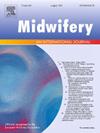The effect of pelvic belts to manage low back and pelvic pain during pregnancy a systematic review and meta-analysis
IF 2.6
3区 医学
Q1 NURSING
引用次数: 0
Abstract
Problem
Low back (LBP) and pelvic girdle pain (PGP) reduce functional capacity and quality of life during pregnancy.
Background
LBP and PGP are commonly experienced during pregnancy. Pelvic belts represent an intervention with minimal intrusion, easy access, and low cost, however the effect on health impairments (e.g., reducing pain) is uncertain.
Aim
This systematic review and meta-analysis evaluated the effects of pelvic belts on health impairments during pregnancy.
Methods
Studies including pregnant women with singleton pregnancies experiencing LBP, PGP, or both were included. Studies with participants having co-morbidities, non-pregnancy-related LBP, PGP, or pelvic floor pain were excluded. The intervention was pelvic belt use compared to no belt or other types of belts. Outcomes included health impairments (e.g., pain and disability). After risk of bias assessment meta-analysis presented as forest plots was conducted using random-effects models, and heterogeneity was assessed using I² statistics. Publication bias was evaluated using funnel plots and Egger’s test. Sensitivity analyses compared rigid and non-rigid belts. Level of evidence was evaluated using GRADE. Data were analysed in STATA.
Results
Seven studies were included. Meta-analysis showed a mean reduction in pain scores of -20.17 (95 % CI: [-40.73], [0.4]) (N = 6 studies) and a smaller reduction in disability of -4.65 (95 % CI: [-16.57], [7.26]) (N = 5 studies). The level of evidence was rated as low and very low.
Conclusion
Pelvic belts provide modest pain reduction and minimal improvement in disability during pregnancy. Due to the low to very low level of evidence, further studies are needed to make clinical recommendations on pelvic belts.
盆腔带对妊娠期腰背痛和盆腔疼痛的影响:系统回顾和荟萃分析
问题:腰痛和骨盆带痛会降低妊娠期间的身体功能和生活质量。背景:腰痛和PGP是妊娠期常见的症状。骨盆带是一种侵入性最小、易于获得且成本低的干预措施,但其对健康损害(如减轻疼痛)的影响尚不确定。目的本系统综述和荟萃分析评价骨盆带对妊娠期健康损害的影响。方法纳入有腰痛、PGP或两者兼有的单胎妊娠孕妇的研究。有合并症、非妊娠相关性腰痛、PGP或盆底疼痛的研究被排除在外。干预措施是使用骨盆带与不使用骨盆带或其他类型的骨盆带相比。结果包括健康受损(例如疼痛和残疾)。在进行偏倚风险评估后,采用随机效应模型对森林样地进行meta分析,采用I²统计量对异质性进行评估。采用漏斗图和Egger检验评价发表偏倚。灵敏度分析比较了刚性带和非刚性带。采用GRADE评价证据水平。数据在STATA中分析。结果共纳入7项研究。荟萃分析显示,疼痛评分的平均降低为-20.17 (95% CI: [-40.73], [0.4]) (N = 6项研究),残疾的平均降低为-4.65 (95% CI: [-16.57], [7.26]) (N = 5项研究)。证据水平被评为低和非常低。结论盆腔带可适度减轻妊娠期疼痛,对妊娠期残疾改善甚微。由于低至极低的证据水平,需要进一步的研究来提出骨盆带的临床建议。
本文章由计算机程序翻译,如有差异,请以英文原文为准。
求助全文
约1分钟内获得全文
求助全文
来源期刊

Midwifery
医学-护理
CiteScore
4.50
自引率
7.40%
发文量
221
审稿时长
13.4 weeks
期刊介绍:
Midwifery publishes the latest peer reviewed international research to inform the safety, quality, outcomes and experiences of pregnancy, birth and maternity care for childbearing women, their babies and families. The journal’s publications support midwives and maternity care providers to explore and develop their knowledge, skills and attitudes informed by best available evidence.
Midwifery provides an international, interdisciplinary forum for the publication, dissemination and discussion of advances in evidence, controversies and current research, and promotes continuing education through publication of systematic and other scholarly reviews and updates. Midwifery articles cover the cultural, clinical, psycho-social, sociological, epidemiological, education, managerial, workforce, organizational and technological areas of practice in preconception, maternal and infant care.
The journal welcomes the highest quality scholarly research that employs rigorous methodology. Midwifery is a leading international journal in midwifery and maternal health with a current impact factor of 1.861 (© Thomson Reuters Journal Citation Reports 2016) and employs a double-blind peer review process.
 求助内容:
求助内容: 应助结果提醒方式:
应助结果提醒方式:


